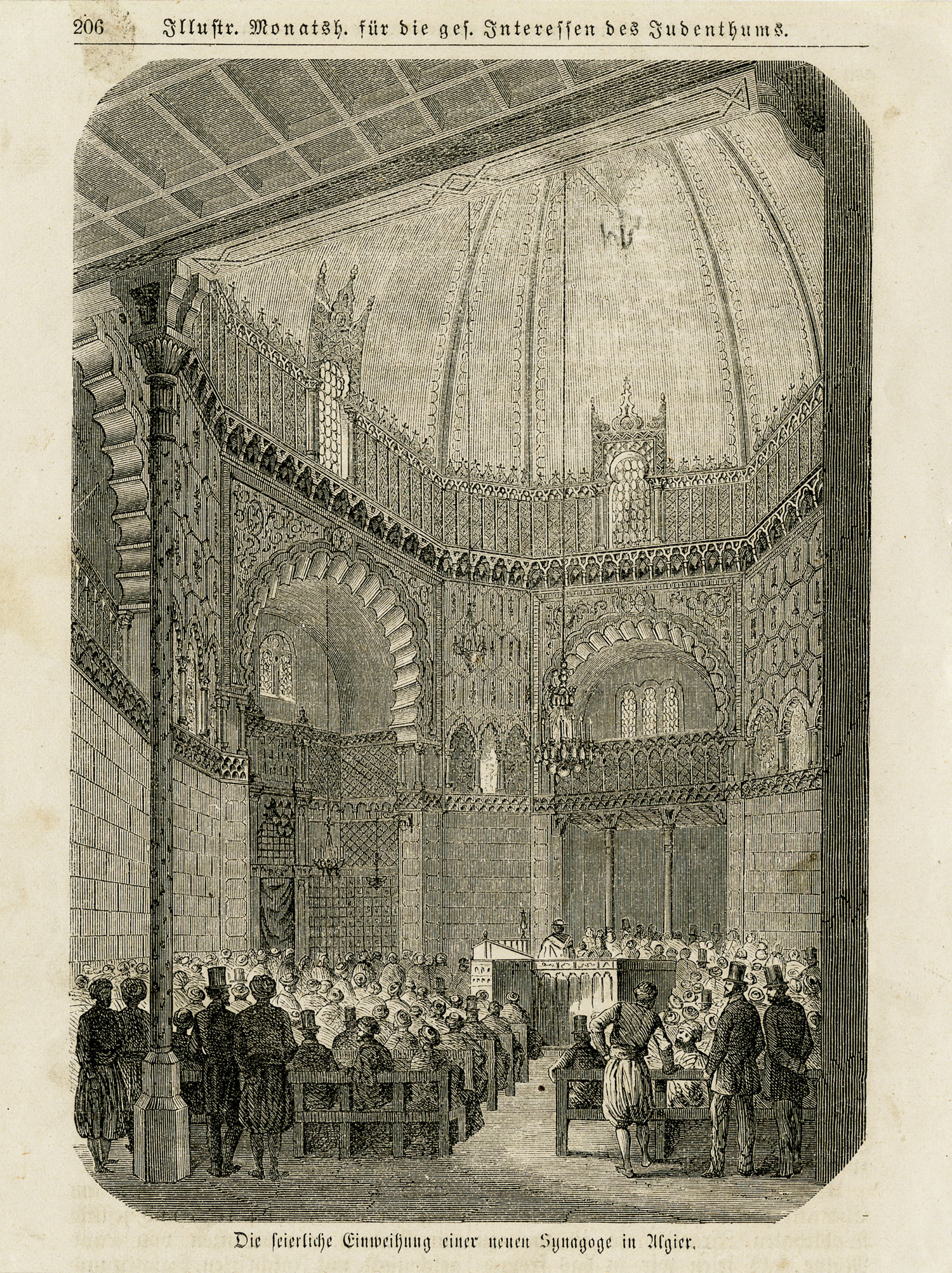This woodcut from the Illustrirte Monatshefte für die gesammten Interessen des Judenthums shows the interior of the Great Synagogue of Algiers during its dedication on September 19, 1865. The article describes the style and appearance of the new synagogue and the elements of the inauguration ceremony, including attendees, songs, speeches, and procession.
The synagogue had a magnificent dome, which lent the space an air of grandeur. While architecturally the building was linked to Muslim traditions and emphasized the centuries-old Jewish presence in Algeria, image and text signal an equal, possibly greater, level of interaction between the Jews of Algiers and the colony’s French citizens and governing authorities. The text notes that for the occasion of the dedication, the synagogue was decorated not only with flowers, but also with flags and imperial coats of arms. During the procession with the Torah scrolls, before the scrolls were placed in the ark, the rabbi recited a Hebrew prayer blessing the emperor and his family.
The French invaded Algeria in 1830, and from 1848 until 1962, the entire Mediterranean region of Algeria was administered as an integral part of France. By 1841, efforts had been made to integrate the Algerian Jewish community with the French, or at least to control it. Jewish rabbinical courts were placed under French control and regional consistories were also established under French oversight. In 1845, the French colonial government appointed Ashkenazi French Jews as chief rabbis for each region, expecting them to promote obedience to French law and loyalty to France. A few years after the synagogue dedication, in 1870, Algerian Jews received French citizenship.
Invitations to the inauguration were issued to numerous authorities and “most excellent” persons of the city. The image here portrays some of these people; note the men dressed in European-style suits and top hats. We also see Jewish attendees in traditional Jewish-Algerian dress. The text notes that, besides the men, high society women attended as well, sitting mixed in with the Jewish women.
